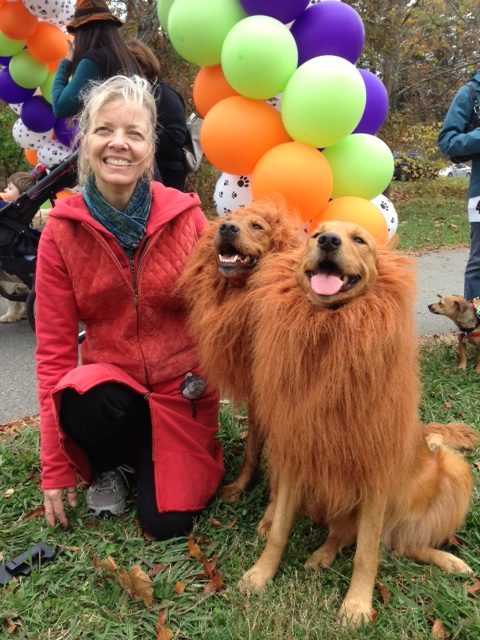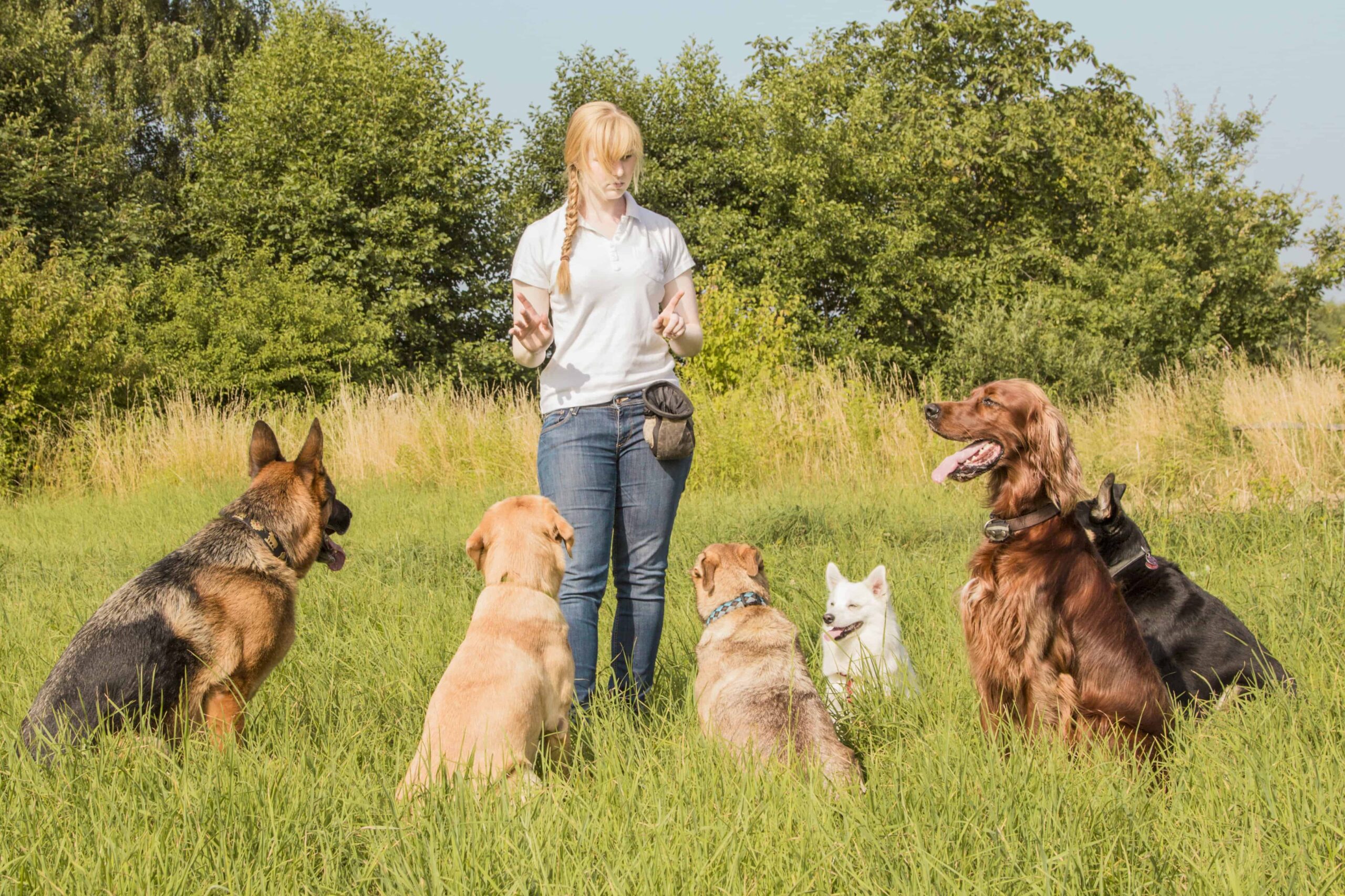Typical Behavioral Issues and Their Solutions in Dog Training
Typical Behavioral Issues and Their Solutions in Dog Training
Blog Article
Essential Tips for Successful Dog Training: A Guide for Pet Dog Owners
Reliable pet training is a diverse procedure that needs a critical technique tailored to both the pet dog's temperament and the owner's goals. Understanding exactly how to browse these obstacles can considerably improve the training experience, ultimately changing the connection between owner and dog.
Recognizing Canine Behavior
Understanding dog habits is vital for effective training and fostering a harmonious relationship between canines and their owners. dog training. Pets interact mostly via body language, vocalizations, and activities, making it vital for proprietors to translate these signals accurately.

Socialization plays a substantial duty in pet habits; exposure to various settings, people, and other pets can substantially affect a pet dog's personality. Variables such as breed characteristics and individual character ought to lead training techniques, as some breeds may have specific behavior attributes that require tailored methods. By comprehending these elements, proprietors can develop an encouraging setting that motivates positive behavior, causing effective training results and a deeper bond with their pets.
Establishing Constant Commands
Effective communication with your dog starts with developing regular commands. This foundational component of training is critical for promoting understanding in between you and your pet dog. Consistency in the commands you make use of ensures that your canine can accurately connect details words or phrases with the desired habits.
When choosing commands, pick clear, distinct words that are simple to claim and distinguish from one another. Stay clear of using similar-sounding commands that may puzzle your pet. As an example, utilizing "rest" and "remain" is appropriate, but "sit" and "struck" can bring about misunderstandings.
Furthermore, keep the very same tone and quantity for each command. Dogs are sensitive to vocal hints, so varying your tone can produce complication.
It is equally important to ensure that all household participants are on the exact same page regarding the commands made use of. A united front in command usage will protect against combined signals and strengthen the learning procedure.
Positive Support Methods
The power of positive support in canine training depends on its capacity to encourage wanted habits through incentives and praise. This strategy is grounded in the concept that habits followed by desirable results are most likely to be repeated. By integrating positive reinforcement into your training regimen, you can properly form your canine's actions in a useful way.
To implement positive support, it's vital to determine what encourages your canine, whether it be deals with, playthings, or verbal appreciation. When your dog does a wanted action, such as resting on command, quickly award them with a reward or love. This association in between the command and the favorable outcome enhances their understanding.
It's critical to timing the rewards properly; supplying the support within seconds of the preferred actions aids your dog make the connection (dog training). In addition, uniformity is key-- guarantee that all relative make use of the same commands and benefit systems to prevent complication

Progressively, you can reduce the frequency of treats as your canine discovers the actions, transitioning to commend or intermittent benefits. This technique not just cultivates a solid bond between you and your canine however also advertises a favorable understanding environment, making training a pleasurable experience for both.
Socialization and Interaction
Constantly subjecting your pet dog to a range of atmospheres, individuals, and various other animals is vital for their social growth. Socializing needs to start early, preferably during the vital window of 3 to 14 weeks, when pups are most receptive to new experiences. Nonetheless, older pets can likewise gain from recurring socialization efforts.
Introduce your dog to various setups, such as parks, pet-friendly stores, and urban locations. This direct exposure assists them adapt why not check here to various stimulations, lowering anxiousness and concern reactions. Encourage favorable communications with other dogs and individuals, making certain that these encounters are regulated and safe to cultivate self-confidence.
Utilize organized playdates with well-mannered pets, as this can improve your pet's social skills and educate them proper actions. Obedience classes and training sessions additionally offer excellent chances for socializing, enabling your pet to communicate with others in a monitored environment.
Screen your pet's body language throughout communications, as this will assist you gauge their comfort degree. Gradually boost exposure to more difficult situations while making sure that each experience is favorable. A well-socialized canine is more probable to exhibit well balanced more helpful hints actions, making them a delight to have in any type of setup.
Addressing Common Training Difficulties
Every pet owner will come across training challenges at some time, no matter their canine's age or socializing degree. Determining usual issues such as stubbornness, interruptions, and fearfulness can aid in establishing effective techniques for enhancement.

Disturbances throughout training sessions can thwart emphasis. To fight this, begin training in a peaceful atmosphere with very little stimuli. Slowly introduce distractions as the dog becomes more competent in commands. Short, frequent training sessions are also reliable in keeping interest.
Fearfulness can hinder a dog's understanding procedure. Gradual desensitization to the source of anxiety, coupled with positive reinforcement, can aid relieve anxiety. Persistence is essential; never ever require a canine right into a scenario that triggers distress, as this might worsen the issue.
Ultimately, understanding and resolving these typical challenges with an organized method will certainly promote a more effective training experience, enhancing the bond between pet and owner while advertising efficient learning.
Final Thought
In recap, effective dog training depends on an extensive understanding of canine behavior, the facility of constant commands, and the application of favorable reinforcement techniques. Socializing plays a crucial role in developing well-adjusted animals, while addressing typical training challenges needs perseverance and adaptability. By carrying out these important methods, pet owners have a peek at these guys can cultivate a strong bond with their canines and advertise preferable behaviors, eventually causing an unified relationship between people and their canine friends.
Understanding canine habits is crucial for effective training and promoting an unified partnership in between pooches and their owners.Socialization plays a considerable function in pet dog actions; direct exposure to various environments, people, and other animals can substantially influence a pet's personality.The power of positive reinforcement in dog training lies in its ability to encourage desired behaviors through rewards and praise. By incorporating positive reinforcement into your training regimen, you can effectively shape your canine's habits in a constructive manner.
In recap, effective pet training counts on a thorough understanding of canine actions, the facility of regular commands, and the application of favorable reinforcement strategies.
Report this page